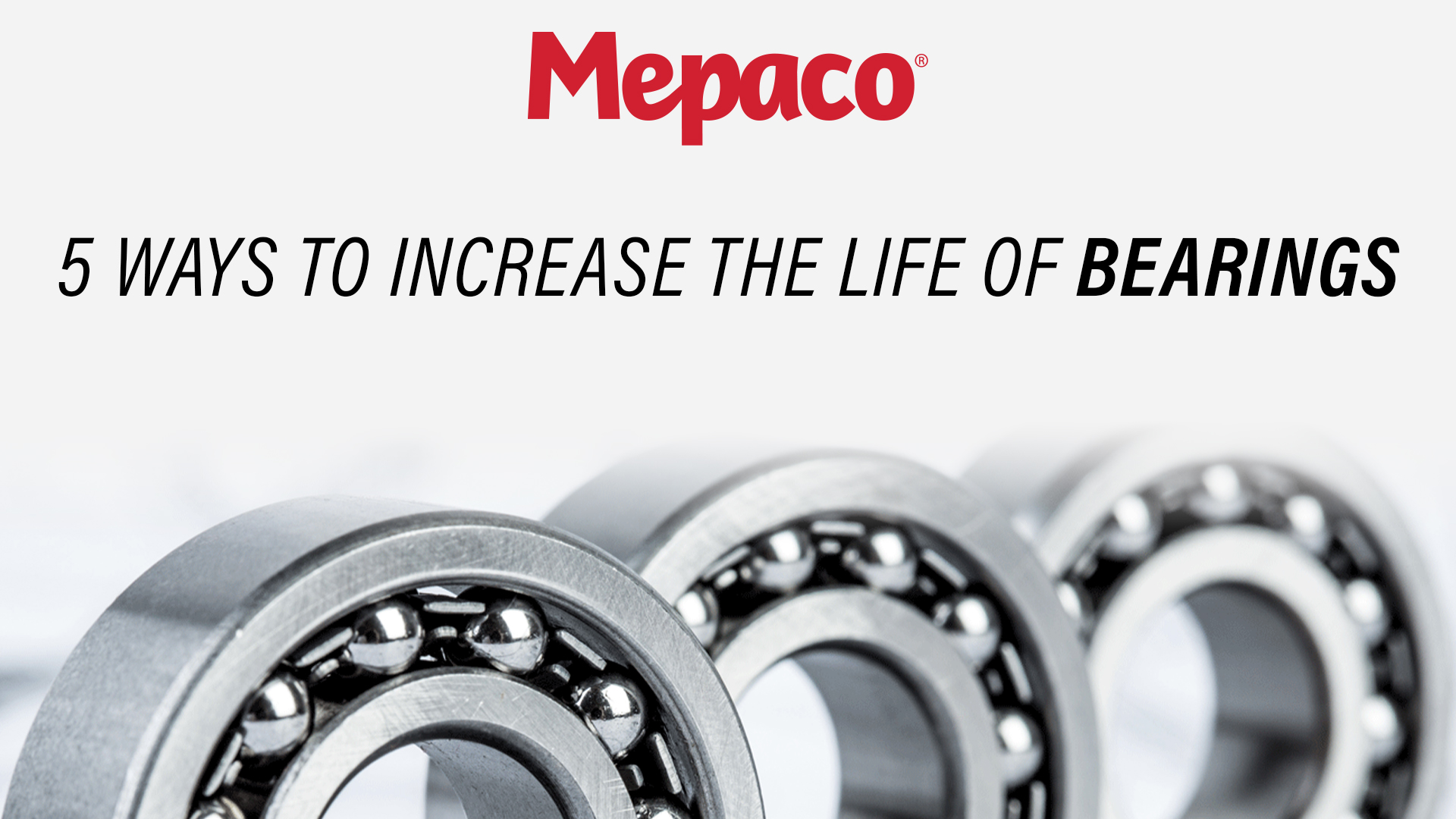
With the complex demandsin food processing and production, safety, and quality, performance of every component within food equipment is critical.
The bearing type and style for your Mepaco equipment has been determined by application and plant preference. Many food processing facilities utilize stainless bearings which provide corrosion
resistance in wet environments. Here are some tips to reduce wear issues and extend stainless food-grade bearing life:
- Mount the bearing correctly after maintenance. Make sure shims are re-installed and that the shaft is correctly positioned, and that the shaft and bearing housing have the correct tolerance. A bearing sitting loose on a shaft will cause significant damage.
- Grease bearings according to manufacturer recommendations. One grease schedule does not fit all bearings. For example, a low RPM bearing on a mixer will not require grease as often as a grinder gearbox bearing.
- Use the correct food-grade lubrication in the right quantity. Over-lubrication can blow out the grease seal, under lubricating can increase friction and cause failure.
- Check bearings regularly for excessive play and replace bad bearings before they cause damage to the equipment. Replacing a bearing is much less expensive than replacing a worn and grooved shaft.
- Seals provide extra protection for bearing lubrication while preventing contaminant entry. Seals protect bearing lubrication by keeping moisture, dust, and dirt out of the bearing; make sure seals are inspected and maintained properly. End covers for housed units solve for issues for exposed shaft ends and workplace health and safety.
Choose the bearing type that will uphold to the food processing application. Standard steel ball bearings are mounted in a painted cast iron housing. Mepaco’s coating on standard bearings is a sealant with anti-corrosive benefits.
In aggressive and gritty food product applications, food processors often choose polymer bearings. The polymer bearing has a moderate up-front investment – but the total cost of ownership is lower because it requires less maintenance when used in aggressive applications.
